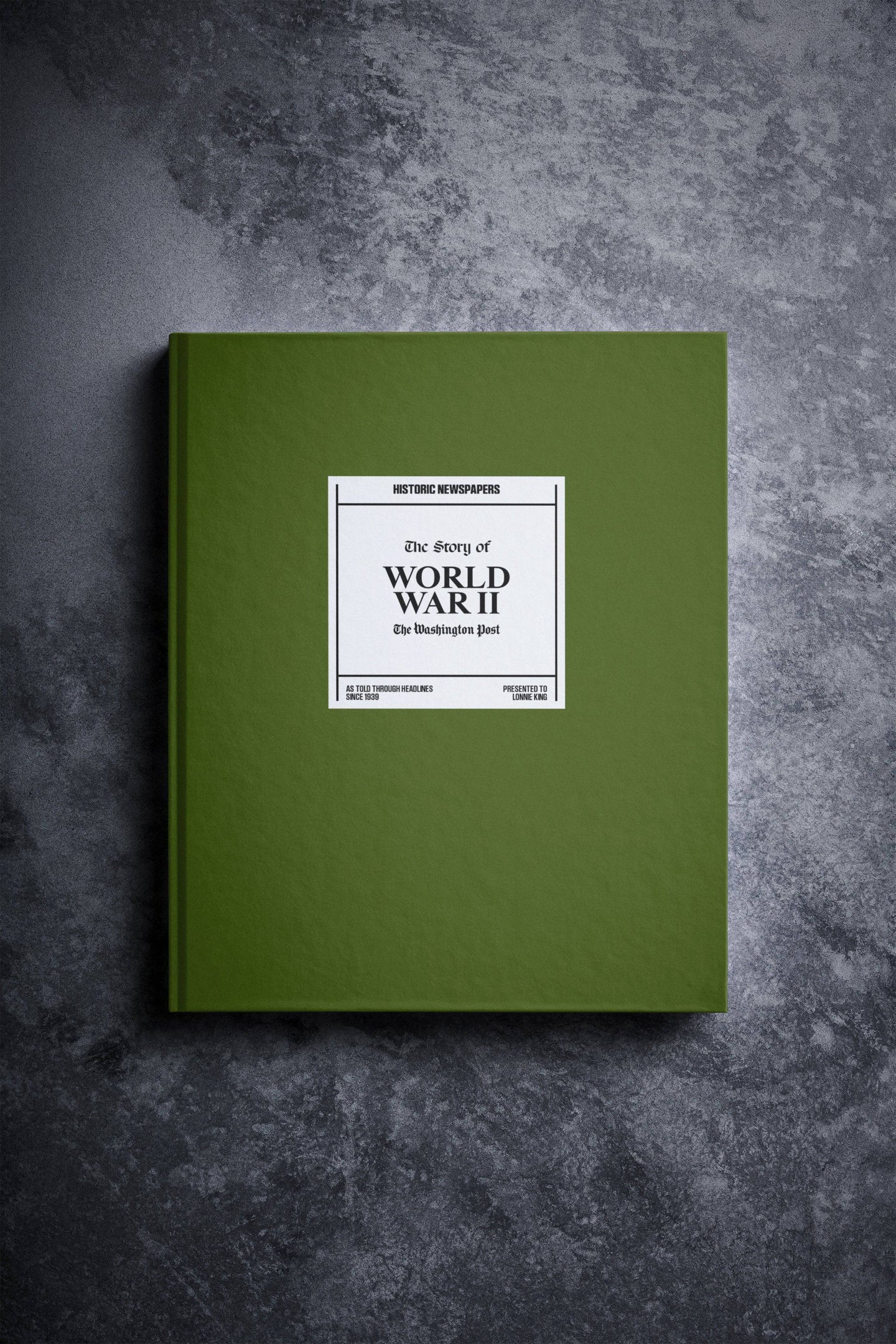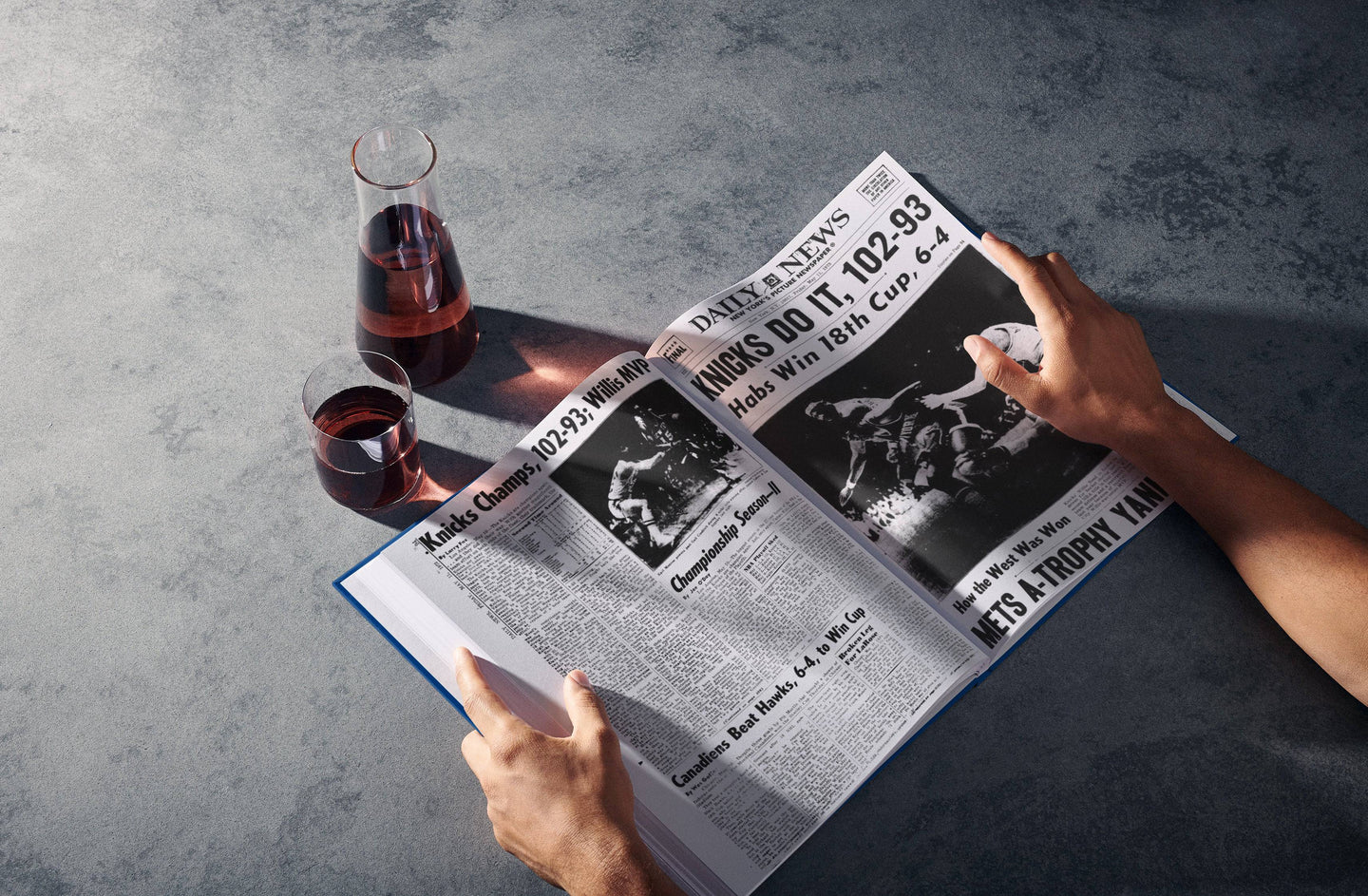The Beatles were undoubtedly the biggest band of their era and, arguably, ever.
Here follows a full Beatles timeline, from their humble beginnings to becoming the superstars whose musical prowess was only surpassed by their adoring fans.
Our Beatles newspaper book is a great way to remember the great times of Beatlemania, and how the events were reported at the time.

The Beatles, pictured in 1965. From L-R, John Lennon, Ringo Starr, Paul McCartney and George Harrison
Image: Wikimedia
Humble Beginnings
The Beatles were an English four-piece rock band, formed in Liverpool in 1960.
The members of the band were John Lennon, Paul McCartney, George Harrison and Ringo Starr, with John and Ringo playing the guitar, Paul on bass guitar and Ringo on the drums.
In March 1956, John Lennon, aged 16, and a few of his friends from school played in a skiffle band called the Quarrymen. After meeting John in the July of that year, Paul McCartney joined the band as a rhythm guitarist and invited his friend George Harrison to watch the band perform. George then auditioned to be in the band, but John thought that he was too young, however, after several months of persistence, he performed lead guitar in a performance as was enlisted as their lead guitarist.
By January 1959, John’s friends from school had left, and he began studying at Liverpool College of Art. The three guitarists, John, Paul and George, were playing under the name Johnny and the Moondogs, and playing rock and roll whenever they could find a drummer.
Stuart Sutcliffe, an art college friend of John and band member, suggested that the band name should be Beatals, as a tribute to Buddy Holly and the Crickets. They used this name until May of 1959, where they went to the Silver Beetles, the Silver Beatles and then in August, shortened to simply The Beatles.
The Early 1960s
In August 1960, their unofficial manager Allan Williams had booked a residency for the band in Hamburg, but without a full-time drummer, they had to audition for a new band member. They auditioned and hired Pete Best in the same month. Six days after hiring Pete, they left for Hamburg for a 3 and a half month residency. The Beatles played in Hamburg in several different locations, but mainly in the red-light district.
Stuart Sutcliffe decided to leave the band early, in 1961, making Paul the bassist, and they were signed into another contract in Hamburg until June 1962. After their second residency, they became increasingly popular in Liverpool with the Merseybeat movement, but they were growing tired of playing the same clubs night after night.
During one of their performances at The Cavern Club, they met Brian Epstein – a local store owner and music columnist. He became their manager in 1962, after courting them for a couple of months. Brian eventually released the band from contractual obligations in Hamburg a month early in exchange for a recording session.
In April, the band was met with horrific news: Sutcliffe had died suddenly from a brain haemorrhage.
Three months later, Brian negotiated a deal with George Martin, the owner of EMI’s Parlophone label. Their first recording session with George Martin took place on 6th June 1962, at EMI’s Abbey Road Studios. Martin immediately complained about Best’s drumming ability, and suggested a session drummer in his place. The band was already considering dismissing Best, and therefore hired Ringo Starr in August 1962. Starr left his band, Rory Storm and the Hurricanes, to join them.
During their third session with Martin, The Beatles recorded Love Me Do, Please Please Me and P.S. I Love You with Starr on the drums, but George was dissatisfied and got Andy White, a session drummer, to take Ringo’s place in the song, with Ringo on the tambourine. Love Me Do was released, and peaked at number 17 on the Record Retailer chart. Martin suggested that Please Please Me should be a faster tempo, and recording took place in November. Martin accurately predicted “you’ve just made your first number one.”
In 1963, the band decided that all four members should contribute vocals to their albums, despite Starr’s limited vocal range. As Lennon and McCarthy established a songwriting partnership, it meant that it limited Harrison’s opportunities as lead vocalist. George Martin suggested that, if they were to be a success, they should change their ways – stop eating, swearing and smoking on stage.
Beatlemania
On 11th February 1963, The Beatles recorded ten songs during a single studio session for their debut album, Please Please Me. After the positive reaction to their first single Love Me Do, the single Please Please Me was met with a bigger reaction, and reached number one on every UK chart except Record Retailer, where it reached number two.
Due to their commercial success, it increased their media exposure – the Beatles became known for their comical attitude as this was different to other pop artists at the time. Due to their attitude and behavior, they become even more of an interest to their fans. When they performed live and toured the UK, the band was greeted with screaming fans, which the press dubbed Beatlemania. Whilst supporting Tommy Roe and Chris Montez, the Beatles overshadowed the artists and assumed top billing ‘by audience demand’ – this was something that had never happened to a British act whilst touring with artists from the US.
After a 5-day tour in Sweden, the band was met by hundreds of screaming fans and around 100 journalists and photographers. Due to the fans, police had to resort to using high-pressure water hoses at a concert in Plymouth.
Please Please Me maintained at the top of the charts for 30 weeks, to be displaced with its follow up, With the Beatles.
In 1964, The Beatles made their US debut on The Ed Sullivan Show on 9th February 1964 – where around 74 million viewers (around half of the US population) watched the performance.
The Beatles visited America when the nation was still mourning the assassination of President John F. Kennedy the previous year, and commentators have suggested that the band reignited the excitement within the country and helped make way for the revolutionary changes to come in the next decade. The interest in the Beatles generated unprecedented interest in British music, and groups such as the Rolling Stones, the Kinks and the Animals made their American debuts within the next three years.
The Beatles’ songs filled the top 5 places on the American Top 40 chart, a feat which has, to this day, never been matched.
The band stopped touring in 1966 as they were getting tired of the audience screaming so loudly that the music couldn’t be heard. It marked the end of four years of non-stop touring, and a total of 1,400 appearances internationally.

The Beatles arriving at JFK Airport, New York
Image source: Wikimedia
The Beatles’ Separation
After tensions between the band members grew after disagreements over who would manage their finances, on 20th September 1969, Lennon announced that he would leave the band. It was agreed that he would withhold an announcement to the public, avoiding the potential drop in sales of their upcoming album. This important event is documented in our 1969 timeline, joined with other iconic moments that happened in that year.
Abbey Road was released on 26th September and sold more than four million copies within three months – it also topped the UK charts for seventeen weeks in total.
On the 31st December 1970, Paul McCartney filed for the dissolution of the Beatles’ contractual partnership. It was met with legal difficulties and it was not formalised until 29th December 1974, where John Lennon signed the paperwork whilst on holiday with his family at Walt Disney World Resort, in Florida.


























Follow us